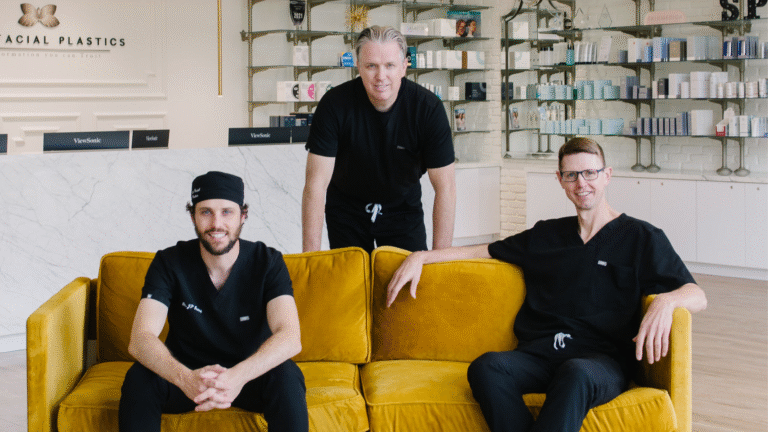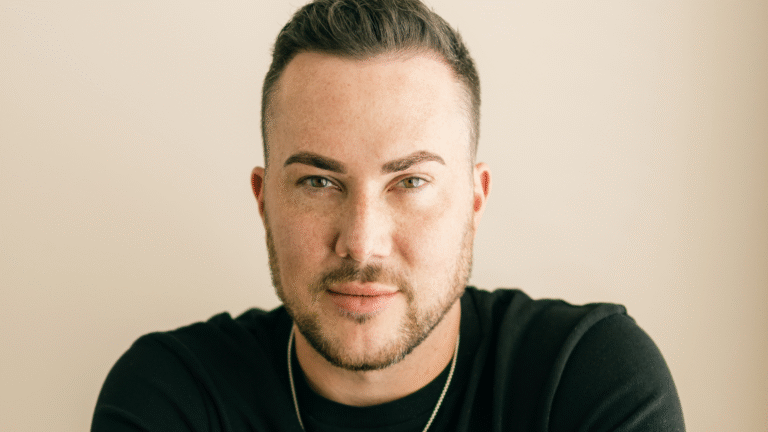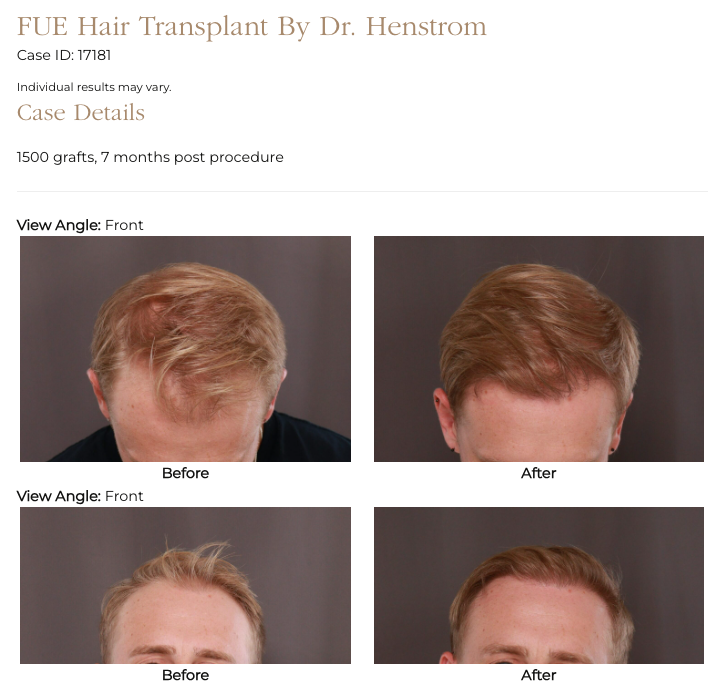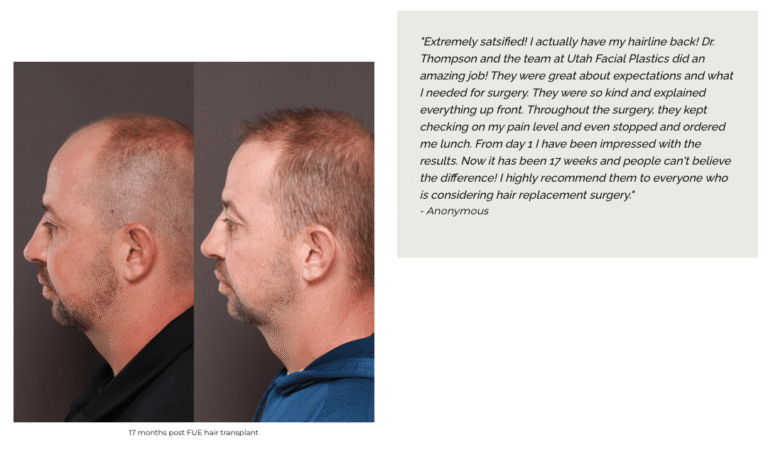Thinking about getting a hair transplant? You’re not alone! Many people are looking for ways to restore their hair and regain confidence. If you’re in Boise, ID, you’re in luck—there are fantastic clinics that specialize in hair restoration in and around the area. While it might seem daunting to start down this path, doing a little homework can make a big difference. In this article, we’ll break down the options available to you, what to expect during the process, and how to find the best care in Boise. So let’s get started on your journey to a fuller head of hair!
Consider UFP Hair Restoration for a hair transplant. Contact us today. At UFP Hair Restoration, a number of our surgical hair restoration patients travel from Idaho each year, with many coming from Boise and surrounding Treasure Valley communities. Over the past 3 years, this number has grown steadily as more patients seek our FUE and FUT expertise from our double board-certified surgeons.
Before getting a hair transplant in Boise, ID, you should research reputable clinics that specialize in hair restoration and schedule a consultation to discuss your specific needs. It’s also essential to understand the different types of procedures available, such as FUE or FUT, and inquire about costs and recovery times to ensure you’re well-informed before making a decision.

Why Consider a Hair Transplant in Boise?
First and foremost, those considering a hair transplant in Boise should know that they’re tapping into a vibrant community that values both health and aesthetics. The clinics here are renowned for their combinations of advanced technology and expert skills. This isn’t just a matter of being trendy; it’s about ensuring quality care and outcomes that you can trust.
Many clinics in Boise offer minimally invasive techniques, which equate to less pain, faster recovery, and natural-looking results.
In addition, there’s something incredibly appealing about having this procedure done in a city where nature surrounds you. Imagine stepping out of a state-of-the-art clinic and finding yourself enveloped by stunning landscapes—rivers and mountains at your fingertips. This environment promotes relaxation, an essential factor during your post-op recovery time. A good mental state can significantly affect healing, making Boise’s atmosphere not just beautiful but beneficial too.
Not only does Boise provide aesthetic advantages with its serene surroundings, but the economic benefits are equally compelling.
As mentioned earlier, the cost of living is relatively low compared to cities like Los Angeles or New York City. Patients opting for hair transplants here often find they save a significant sum. This saving doesn’t mean compromising on quality; instead, it opens the door to quality care that often rivals that seen in more expensive locales.
Beyond finances, there’s also something reassuring about receiving care in a close-knit community where the practitioners tend to foster strong patient relationships. This familiarity often leads to better personalized care, enhancing your experience.
The choice to undergo a hair transplant is deeply personal and multifaceted.
In Boise, you’re not just getting cosmetic improvement; you’re entering a healthcare ecosystem that combines affordability with skill and an ambiance conducive to healing. With top-rated clinics offering advanced methods amid breathtaking views and comforting vibes, your road to regaining confidence through hair restoration is well-supported from multiple angles.
Different Hair Transplant Methods
Multiple methods of hair transplantation exist, and understanding their differences can help you make an informed choice tailored to your needs. Choosing the right technique often depends on factors like the extent of hair loss, budget, and preference for recovery time.
Follicular Unit Transplantation (FUT)
Follicular Unit Transplantation, often referred to as FUT, is a method where a strip of scalp is removed from a donor area, typically at the back of the head. This technique enables a surgeon to harvest numerous follicular units in one go, which are then transplanted to thinning or balding areas.
However, it comes with a downside; the method requires stitches and invariably leaves a linear scar after healing. Patients often find this scar can be concealed beneath existing hair but may still be noticeable if one opts for shorter hairstyles.
It’s worth noting that FUT has a success rate of around 95% for graft survival, making it a reliable option for many.
Follicular Unit Extraction (FUE)
In contrast, Follicular Unit Extraction (FUE) employs a different strategy—individual hair follicles are meticulously extracted using a micro-punch tool. This approach minimizes scarring because it avoids the need for incisions or sutures, resulting in tiny dot-like scars instead.
While FUE is generally less invasive than FUT and allows for quicker recovery times, it can be more time-consuming during the procedure itself and tends to come with a higher price tag due to its meticulous nature.
Similar to FUT, the survival rate for grafts in FUE stands at approximately 95%, lending it considerable credibility among patients looking for natural-looking results.
Our FUE and FUT procedures at UFP Hair Restoration maintain an average graft survival rate of 95-97%, thanks to advanced harvesting techniques and meticulous follicle handling. For most Salt Lake City patients, the average transplant session ranges between 1,500–2,400 grafts, with early regrowth typically visible at 4 months and more complete density achieved by 9–12 months. Here’s an example of the stunning results of a patient who used the FUE method with 1500 grafts.
Preparing for Your Hair Transplant Consultation
The first step in preparing for your consultation is Research. This means diving deep into the world of hair restoration techniques and the clinics serving Boise. Don’t limit yourself to just one or two sources; explore forums, reputable websites, and patient testimonials to gain diverse perspectives. The more you know about the various methods available, like FUE (Follicular Unit Extraction) and FUT (Follicular Unit Transplant), the better equipped you will be to discuss options with your surgeon. It also helps you ask informed questions. Before settling on a clinic, check their credentials, and make sure they are accredited by relevant medical boards. Trust is paramount in this endeavor.
Once you’re armed with facts about different treatments and clinics, it’s time to shift gears to prepare your inquiries.
Next comes the List of Questions. Prepare a robust list that reflects your curiosity and concerns. Asking the right questions can significantly impact your decision-making process.
Some worthwhile questions might include:
“What kind of experience do you have performing these procedures?”
or
“Can you share any before-and-after pictures of previous patients?”
Additionally, don’t hesitate to ask about success rates and follow-up care recommendations. Knowing how long recovery usually takes and what post-operative care looks like can help set your expectations appropriately. This dialogue establishes not just a professional relationship but also reassures you that your chosen surgeon values transparency.
This brings us to Medical Evaluation. Prior to the consultation, gather all pertinent medical records that provide insights into your health history. Include data related to any hair loss issues you’ve encountered over the years, medications you’re currently taking, or past surgeries you’ve undergone. In fact, some clinics may require a preliminary blood test—this is quite common as it’s critical to rule out underlying conditions that could affect not only the transplant’s success but also your overall well-being during the procedure. Ensuring that all this information is organized helps streamline the consultation process and fosters greater confidence in whatever decisions come next.
Finding the Best Clinics and Surgeons
In Boise, you have access to various clinics that specialize in hair transplants. However, not every clinic is created equal; thus, you’ll need to be discerning in your selection process. The first thing to focus on is checking credentials. Ensure that both the clinic and its surgeons are certified by respected organizations such as the American Board of Hair Restoration Surgery. This certification indicates that they have met rigorous standards of education and training. Additionally, it’s helpful to verify their standing with the Better Business Bureau—if there are numerous complaints or negative reviews, this could be a red flag.
Consider UFP Hair Restoration for a hair transplant.
Once you’ve established the credibility of the clinic, proceed to reading reviews from past patients. Websites like Google Reviews, Yelp, and HealthGrades can offer unfiltered opinions and experiences related to different clinics. Don’t just look at overall ratings; check specific comments about patient care, results, recovery experiences, and follow-up services. Pay attention to recurring themes, whether positive or negative; they often reveal valuable insight into what you can expect.
However, online reviews don’t tell the whole story and it’s at this juncture that word-of-mouth recommendations become invaluable. Personal insights from friends or family members who have undergone hair transplant procedures can set realistic expectations and guide you toward trustworthy clinics. They can provide unvarnished opinions about their experiences, what worked well for them, and aspects they felt could be improved. Hearing firsthand accounts helps you gauge the strengths and weaknesses of particular clinics in a way that generic reviews may not capture.
Furthermore, consider scheduling consultations with a few selected clinics after gathering all this information. Use this opportunity not only to ask questions but also to observe the environment: Is the staff friendly? Do they make time for your inquiries? The answers will give you a sense of whether they prioritize patient satisfaction and care.
Finally, don’t hesitate to address any lingering concerns during these consultations. Whether it’s about technique options or pricing transparency, clarity now will pave the way for better decision-making down the line. Making an informed choice isn’t just about finding a good physician—it’s also about establishing a relationship where you feel supported throughout your journey toward restoring your hair.
At UFP Hair Restoration, we have two double board-certified facial plastic surgeons—Dr. Douglas Henstrom and Dr. Scott Thompson, as well as board-certified head, neck, and face surgeon, Dr. Manning—together they have 60 years of combined surgical experience in hair restoration and facial aesthetics. Dr. Thompson and Dr. Manning are among the select group of surgeons worldwide who are ISHRS Fellowship Trained in Hair Restoration Surgery, a distinction that reflects the highest standards of specialized training and expertise in the field. This means your procedure is performed by surgeons who have undergone rigorous, hands-on training in advanced FUE and FUT techniques, ensuring both surgical precision and a natural aesthetic outcome.
Recovery Tips and Expected Results
The journey to a fuller head of hair doesn’t end when you leave the clinic. Recovery is a critical phase that can greatly influence the success of your hair transplant. While individual experiences may vary based on the technique used—FUE (Follicular Unit Extraction) or FUT (Follicular Unit Transplantation)—there are several common recovery tips everyone should heed.
Immediate Aftercare
Right after your procedure, one of the most important things to focus on is keeping your head elevated while you rest. This simple action can significantly reduce swelling, which is a common side effect in the days following a transplant. A suggestion is to use multiple pillows or even sleep in a recliner for at least the first week. Elevating your head helps promote better circulation and reduces blood flow to the area, minimizing any potential swelling.
At UFP Hair Restoration, we also offer advanced Recovery Boosters—including Hyperbaric Oxygen Therapy (HBOT), Red Light Therapy (RLT), Keravive Scalp Treatment—to accelerate healing, reduce inflammation, and promote optimal graft survival in those early days. Patients who choose these add-on therapies often notice faster comfort and visible progress compared to standard recovery timelines.
The key here is patience. During this early recovery period, it’s essential to follow your surgeon’s guidelines carefully. You’ll receive detailed instructions from our team, including wound care steps, gentle hair washing techniques, and recommended products to support your healing process. Our patient care coordinators are available to answer any questions along the way, ensuring you feel supported through every stage of recovery.
The key here is patience. During this early recovery period, it’s essential to follow your surgeon’s guidelines carefully. They may provide specific instructions regarding wound care and medication to assist in your healing process.
Managing Pain and Itching
Some discomfort or itchiness around the transplanted area is normal, and you can manage this effectively with over-the-counter painkillers like ibuprofen, which can alleviate discomfort without excessive side effects. However, make sure to avoid scratching the transplanted area; doing so can introduce bacteria and increase the risk of infection. Remember, clean hands mean a clean recovery!
It’s also worth noting that using a gentle touch while washing your hair during this time will help keep irritation to a minimum as well. Your doctor will likely recommend a mild shampoo once it’s safe to wash your hair post-surgery.
Long-term Care
For optimal healing, you’ll need to avoid strenuous activities for at least a month post-transplant. Activities that induce sweating—like running or weightlifting—can disrupt newly transplanted follicles. Sweat not only irritates these delicate follicles but may also lead to infection if bacteria get trapped near them.
Giving yourself ample time for recovery will ultimately pay off when you see those results begin to flourish. Staying proactive about caring for your scalp helps keep new hairs safe and supports faster growth.
Understanding what comes next can alleviate anxiety surrounding your new look.
Expected Results Timeline
As for what results you can anticipate? Initial hair shedding within the first month is completely normal as your body adjusts and makes way for new growth. If all goes well, you’ll generally notice new hairs beginning to sprout around the three-month mark, with full results becoming visible anywhere from 12 to 18 months post-procedure. The wait might seem lengthy, but remember: good things come to those who wait!
At UFP Hair Restoration, over 99% of our patients report noticeable improvement in density and appearance by the one-year mark. To help support optimal outcomes, we offer Recovery Boosters such as Red Light Therapy to stimulate follicle activity and Platelet-Rich Plasma (PRP) to nourish new growth during the early stages of healing. These adjunct treatments can help maximize graft survival and may accelerate the appearance of thicker, fuller hair.
Now that you’re aware of what to expect during recovery, let’s explore financial considerations and options available in Boise.

Potential Risks and Safety Tips
Like any surgical procedure, hair transplants come with inherent risks. While these procedures can yield significant and satisfying results, precautions are essential to ensure everything goes smoothly. Understanding these potential risks empowers you to make informed decisions about your treatment and care, which in turn helps improve outcomes.
Common Risks
Among the most common risks associated with hair transplants are infection, scarring, and unnatural-looking hair growth. While all of these conditions can be concerning, many can be mitigated through careful selection of a qualified surgeon as well as adherence to post-operative protocols. Infections often stem from improper hygiene practices; therefore, ensuring that the clinic maintains a sterile environment is vital. Scarring can occur—most notably with follicular unit extraction (FUE)—if care isn’t taken during the transplant process. Unnatural-looking hair growth usually arises from poor technique during implantation or placement errors when grafts are inserted at the wrong angle or spacing.
Given these potential issues, taking proactive measures will drastically increase your chances of a successful outcome.
Safety Tips
One of the most effective steps you can take is to choose a board-certified surgeon who has demonstrated a proven track record in performing hair transplant procedures. Look for online reviews and testimonials from previous patients, as this feedback can shed light on the surgeon’s expertise and patient satisfaction levels. Engage in consultations to discuss your expectations and ask questions regarding their experience.
At UFP Hair Restoration, all procedures are performed by Dr. Thompson, our double board-certified facial plastic surgeon who is ISHRS Fellowship Trained in Hair Restoration Surgery, Dr. Henstrom, or Dr. Manning who is ISHRS Fellowship Trained in Hair Restoration Surgery — a distinction held by fewer than 200 surgeons worldwide. Our team maintains more than 95% graft survival rate across hair transplant procedures, and more than 99% of our patients rate their surgical experience as “excellent” in follow-up reviews.
Following all pre- and post-operative care instructions provided by your clinic is another essential aspect of minimizing risk. This may include specific guidelines like avoiding certain medications before surgery or adhering to prescribed topical treatments afterward. Each detail contributes to your healing journey, so maintaining open communication with your medical team ensures everyone is aligned toward achieving optimal results.
Attending follow-up visits is crucial for monitoring your recovery process. These appointments allow for check-ins on healing progress and provide opportunities to address any concerns promptly. Your surgeon can assess the rate of hair growth and ensure there are no complications arising from the transplants themselves.
Lastly, entering the procedure in good general health is vital. If you’re dealing with underlying health conditions like diabetes or cardiovascular issues, they could complicate both the surgery itself and your recovery timeline. Consulting your physician beforehand can help ensure you’re in peak condition, thereby significantly reducing complications.
Safeguarding yourself through proper preparation not only enhances your experience but also lays the foundation for lasting success in achieving that fuller head of hair you desire.
By taking these risks seriously and adhering to safety protocols, you stand to elevate both your comfort and overall satisfaction during your hair transplant journey.
In summary, being proactive about safety measures will lead you to achieve the best possible outcomes for a hair transplant in Boise, ID. Familiarize yourself with potential risks and always prioritize your health before undergoing any surgical procedures.
Related Resources
If you are someone who is considering a hair transplant, UFP Hair Restoration offers excellent options.
Contact us to schedule in Layton or Draper, UT locations for a hair restoration consultation or call 801.849.8140.


